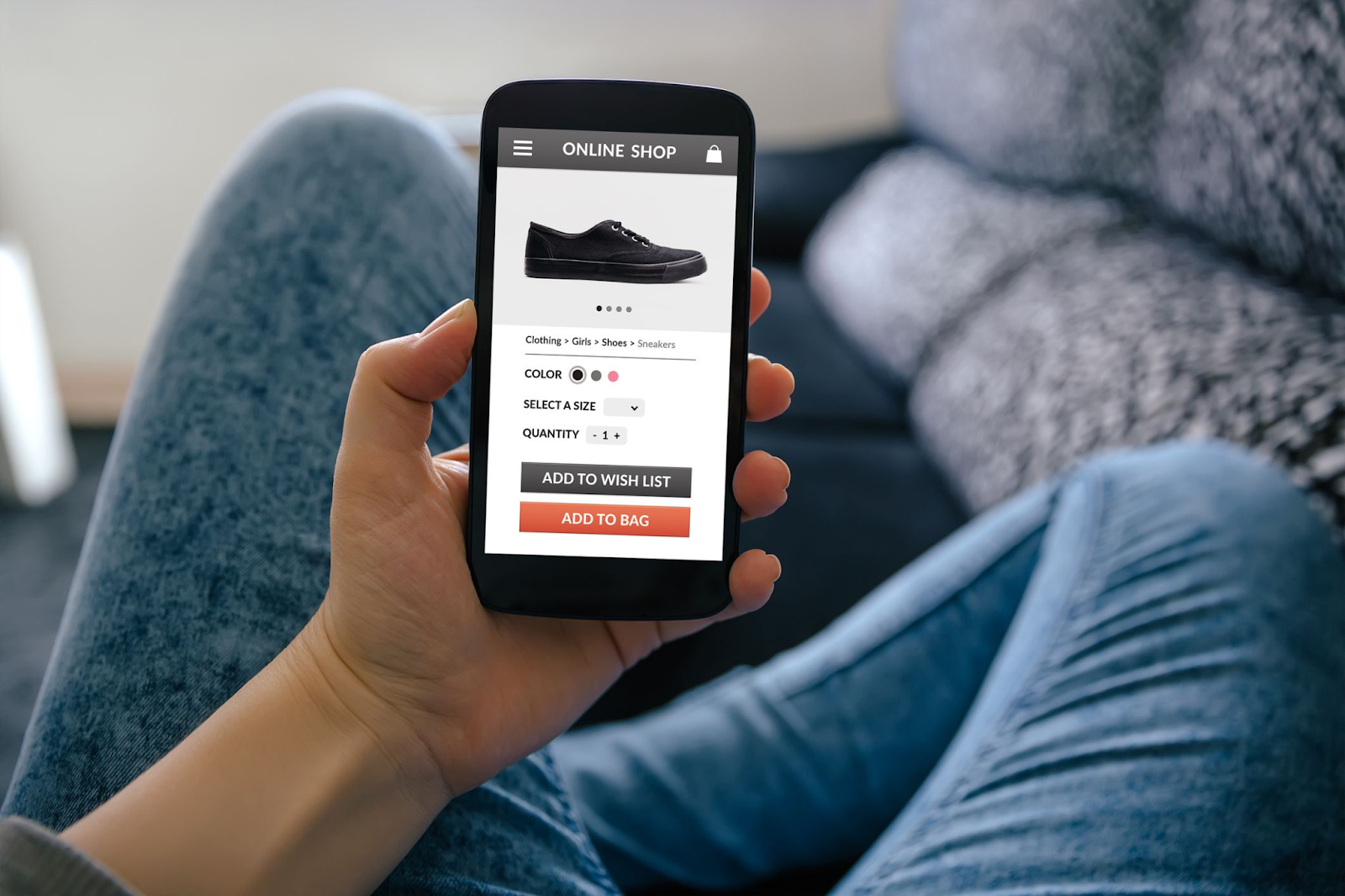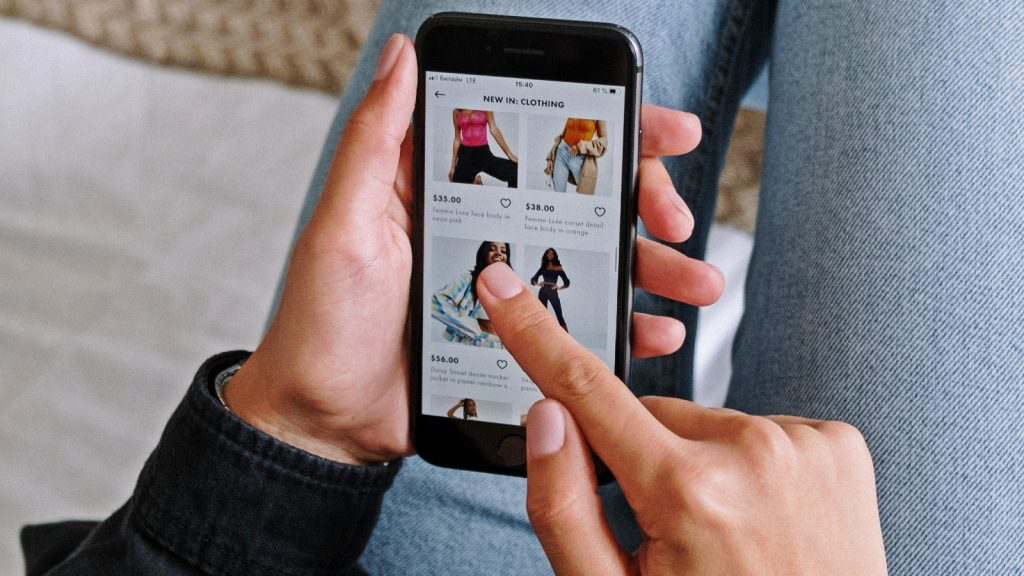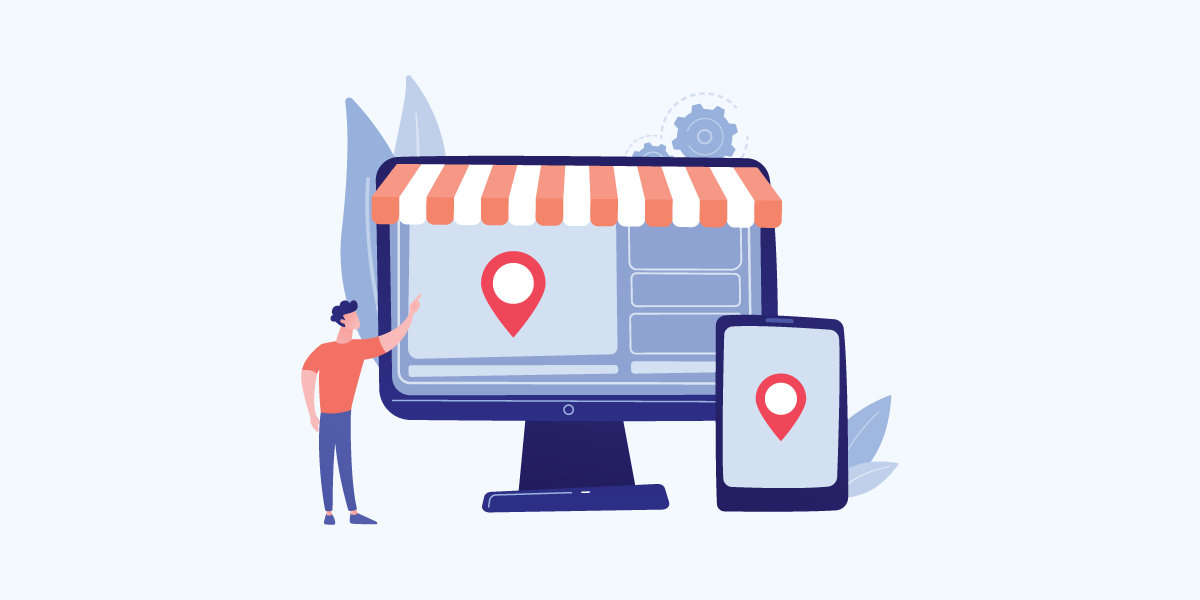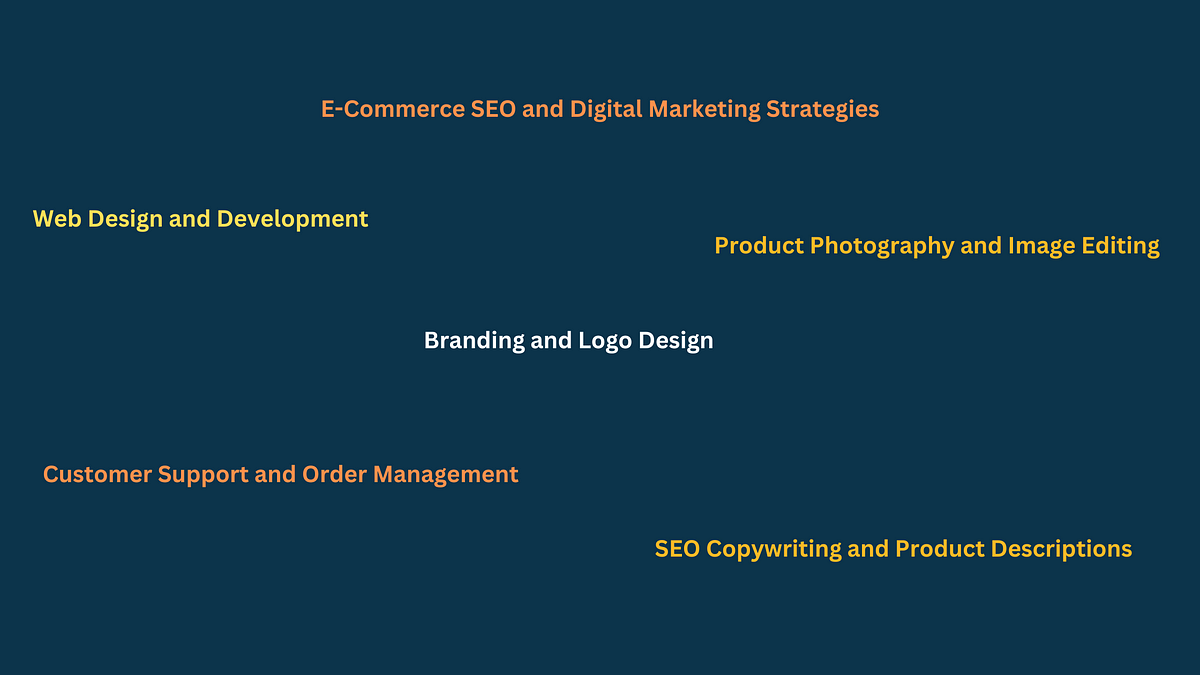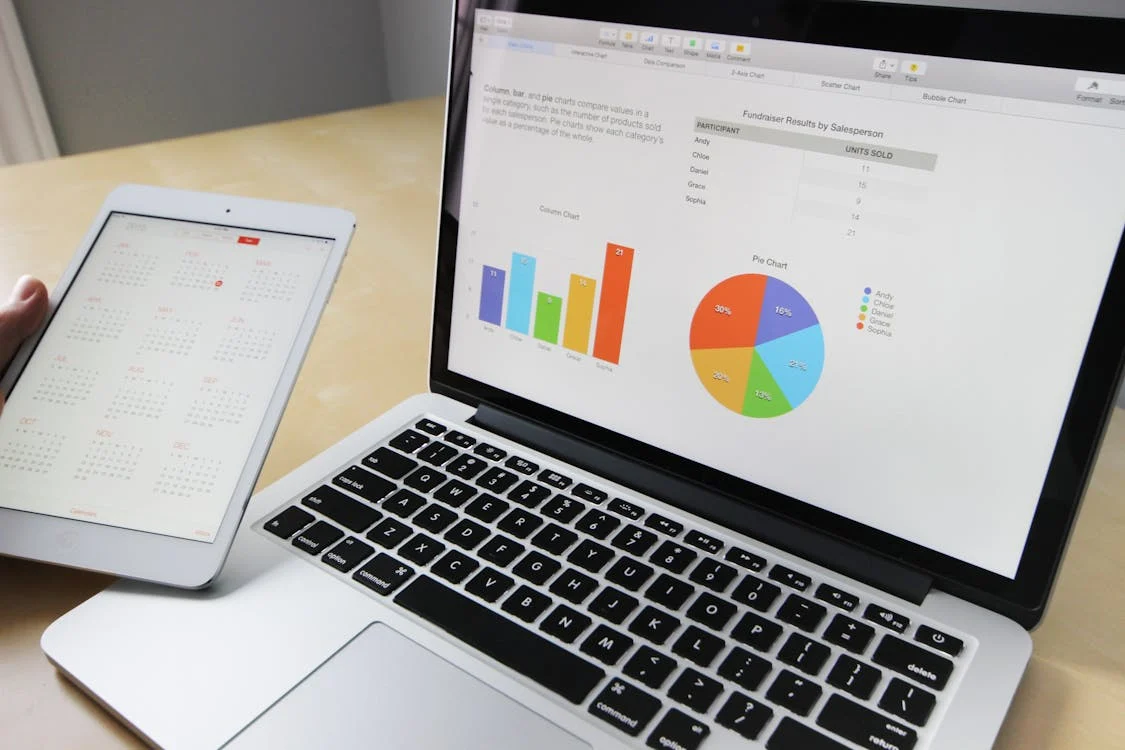Using a shopping app is still popular and has even grown in recent years. According to a study conducted by eMarketer in 2022, the number of shopping app customers in the U.S. increased 16.6% over the previous year to 187.7 million. This trend continues into 2023. Against this backdrop, the question of how to create a shopping app becomes relevant.
In 2023, we expect further development of technologies that help make online shopping more convenient and personalized for consumers. For example, it may be using artificial intelligence, and machine learning for recommendations, analysis of customer behavior, etc. There will also be new features and capabilities.
Why should a business develop its own shopping app?
Many consumers prefer to shop through their smartphones. Developing such a project can attract new customers. Consider other reasons a business should develop such a product:
- A more convenient and faster way to shop than a website on a smartphone. Customers can easily and quickly find what they need, place an order, and pay for it in a few clicks, which can increase repeat purchases.
- Increased Loyalty: Development allows businesses to create a closer connection with customers, which can increase customer loyalty. The app can contain personalized offers, a loyalty program, and promotional and discount alerts, which can keep customers interested in your brand.
- Customer behavior information analytics, which can help businesses better understand customer needs and improve business. It can also help develop a more effective marketing strategy and increase conversions.
- Competitive Advantage: Most major retailers and brands now have solutions in place. This can help businesses stay competitive and appeal to customers.
How a shopping app works
The shopping app allows you to shop via your smartphone. As a rule, a catalog with descriptions and photos is provided, as well as a convenient interface for searching and selecting.
You can use the search function to find the right item by category or keyword. They can also use filters to sort the range by price, brand, size, etc.
When the user finds the product they want, they can add it to their cart and continue shopping or proceed to checkout. During checkout, the user can specify a shipping address, select a payment method, and enter a promo code, if available.
Once the order is placed, the system will process the order, check availability, ask for payment, and arrange delivery. When everything is ready for delivery, the customer will receive a notification with information about the order status and delivery date.
After receiving, you can leave feedback and evaluate the quality. If the products do not match the description or turn out to be defective, you can return it using the return function.
What are the benefits of a shopping app?
Convenience is a key advantage. With a smartphone, you can shop anywhere you have access to the Internet. But it also has a lot of other benefits:
- Fast and easy search: The user-friendly interface and search functions allow you to quickly find the right product. Machine learning algorithms and personalized recommendations allow you to offer items that best match his preferences and interests.
- Convenient payment and delivery methods. For example, you can use your bank cards or payment systems to pay for purchases. Also, many platforms offer home or office delivery, which saves a lot of time.
- Special discounts and offers that are not available on the website or in-store. This can be an added incentive to buy and save money.
- Convenient return process. In case the product doesn't fit, you can return it quickly and easily.
Mandatory features of a shopping app for buyers
There are several features that are considered mandatory for a shopping app to provide a seamless shopping experience for customers. Here are some of the most important features:
- User-friendly interface: A shopping app should have an intuitive and easy-to-use interface that allows customers to navigate the app and find what they are looking for quickly and easily.
- Product listings: The app should provide detailed product listings that include images, descriptions, prices, and availability.
- Search functionality: The app should have a search function that allows customers to find products based on keywords, categories, or filters.
- Shopping cart: A shopping cart feature is essential to allow customers to add products to their cart and keep track of their purchases.
- Payment options: The app should offer multiple payment options, including credit card, debit card, PayPal, and other online payment systems.
- Order tracking: The app should allow customers to track their orders, including shipping and delivery information.
- Reviews and ratings: Customer reviews and ratings provide valuable information to other customers and can help them make informed purchasing decisions.
- Personalization: The app should provide personalized recommendations based on customers' shopping history and preferences.
- Customer support: The app should offer customer support options, including live chat, email, and phone support, to help customers with any issues they may encounter.
A shopping app should provide a seamless and convenient shopping experience for customers, with easy navigation, detailed product listings, multiple payment options, and reliable customer support.
Mandatory features of a shopping app for service providers
If you are a service provider offering a shopping app, there are several features that are considered mandatory to provide a high-quality service.
Here are some of the most important features:
- Secure payment processing: Your shopping app should provide a secure payment processing system that is compliant with industry standards for data protection and encryption.
- Inventory management: Your app should allow you to manage your inventory, including updating product listings, tracking stock levels, and setting pricing.
- Order management: Your app should provide an order management system that allows you to track and process customer orders, including shipping and delivery information.
- Customer relationship management: Your app should include a customer relationship management system that allows you to communicate with customers, provide support, and manage returns and refunds.
- Analytics and reporting: Your app should provide analytics and reporting tools that allow you to track sales, customer behavior, and other important metrics to help you make informed business decisions.
- Integration with third-party systems: Your app should be able to integrate with third-party systems, such as payment gateways, shipping providers, and marketing automation tools.
- User management: Your app should provide user management features that allow you to manage customer accounts, including login and registration, password resets, and account information management.
- Multilingual support: If your app is targeting a global audience, it should support multiple languages to provide a seamless user experience for customers around the world.
A shopping app as a service provider should provide a robust platform that allows you to manage your business operations, track customer behavior, and provide a seamless and convenient shopping experience for customers.
A quick look at the successful examples of shopping apps
There are many successful shopping apps that have gained popularity among users.
Here are some of the most successful examples of shopping apps:
- Amazon: Amazon is one of the largest online retailers in the world, and its shopping app is one of the most successful. The app offers a wide range of products, from electronics to clothing, and provides features like one-click ordering, customer reviews, and personalized recommendations.
- Walmart: Walmart is another popular shopping app that offers a wide range of products at competitive prices. The app allows users to browse products, create shopping lists, and even order groceries for delivery or pickup.
- eBay: eBay is an online auction and shopping website that allows users to buy and sell a wide range of products. The eBay app offers features like notifications for bids and auctions, personalized recommendations, and the ability to track packages.
- Etsy: Etsy is an online marketplace that specializes in handmade, vintage, and unique items. The Etsy app allows users to browse and purchase products from independent sellers around the world, as well as track their orders and communicate with sellers.
- Zara: Zara is a popular fashion retailer that offers a range of trendy and affordable clothing. The Zara app allows users to browse the latest collections, create wishlists, and even shop for items directly from the app.
These shopping apps have been successful due to their user-friendly interfaces, wide selection of products, and convenient features like personalized recommendations and fast checkout.
Development of a shopping app - what is important to know?
You should responsibly research the market and determine the target audience before you start implementing your idea. You need to find out what products and services are most popular. This will help determine the target audience and their needs.
Next steps:
- Creating a prototype. This will help visualize the project and understand what features and interfaces will be most in demand.
- Once the prototype is created, development can begin. This will require a team of developers, designers, and testers.
- Testing. After development, everything needs to be tested to make sure everything is working and has no bugs.
- Release. After successful testing, everything is ready for release to market.
A suitable business model may include the following aspects:
- A commission model: payments are made within the platform and the provider receives a commission on sales.
- Subscription model: access to exclusive offers and discounts by paying a monthly subscription.
- Advertising model: providers can place ads and earn revenue from ad payments.
- Recommendation sales model: personalized recommendations and providers can sell these recommendations.
When choosing a business model and monetization, the needs of the audience and current market realities must be considered.
Conclusion
Developing a shopping app is one of the most popular trends among businesses. It can simplify the shopping process, make it faster and more convenient, and significantly increase sales for providers.
It is necessary to conduct research and find out which products and services are the most popular. It is necessary to determine the target audience and their needs. Prototyping, development, testing, and releasing to market are important steps. A suitable business model can include a commission model, subscription model, advertising model, or recommendation sales model.
Monetization of a shopping app can be through commissions, recommendation sales, advertising, and other methods, depending on the business model chosen.
And finally, it's important to emphasize once again that the critical thing for the success of a shopping app is convenience and simplicity, the availability of the necessary features, and effective monetization for providers.
